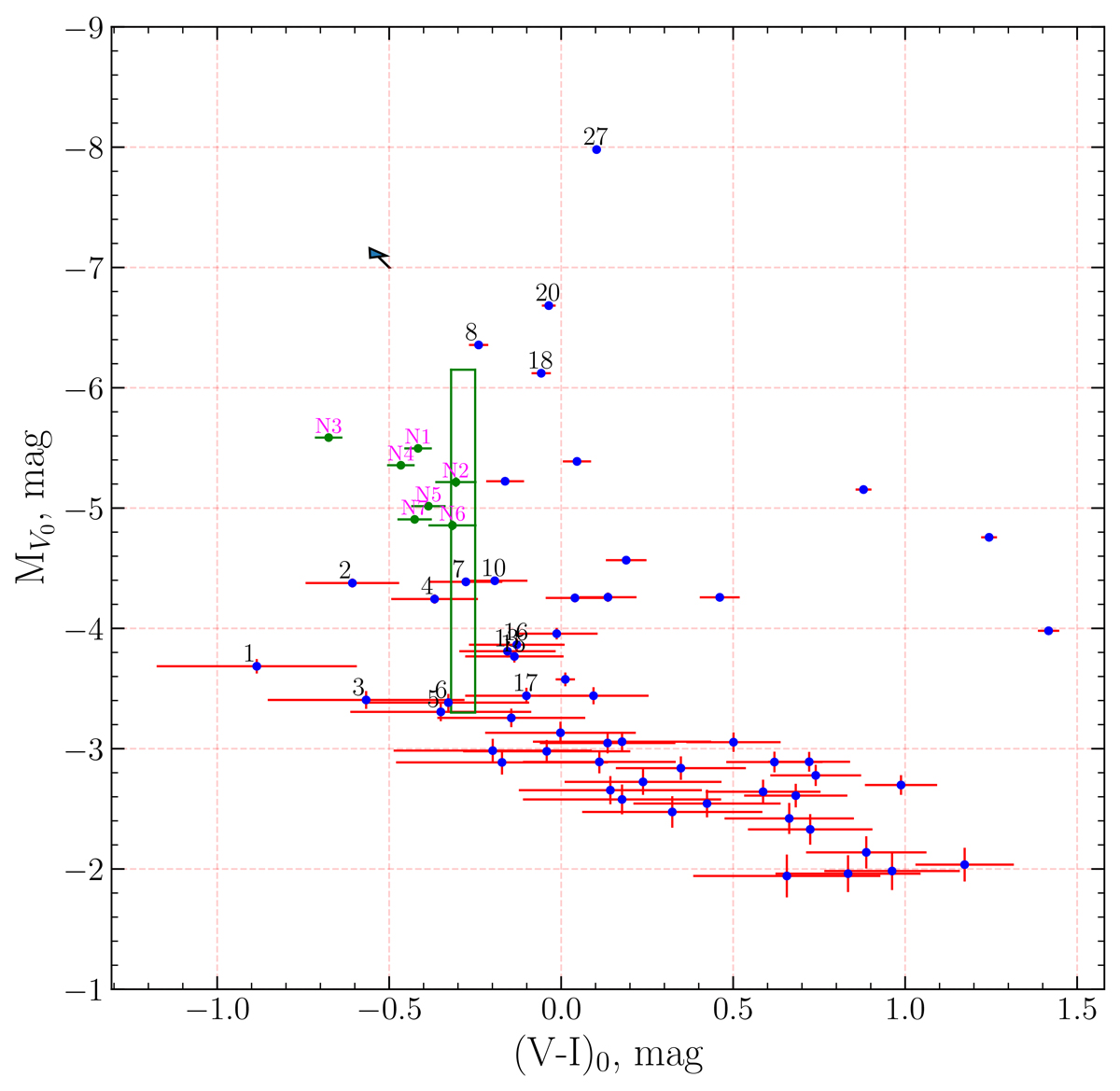Fig. E.1.

Download original image
Hubble Space Telescope-based diagram of ’MV versus (V − I)’, corrected for MW extinction, for all stars within the Peekaboo dwarf body. Several the hottest stars ((V−I)0 < –0.25 mag) and four supergiant stars (MV, 0< –6.0 mag) are marked by their numbers in Tab. E.1. The additional extinction of δAV = 0.16 mag and reddening of δ(V − I) = 0.057 mag in the E and W H II-regions (estimated above in this section) is not taken into account in the plot. Its effect is shown by an arrow in the upper-left section of the plot. Stars No. 1, 2 and 3 show very blue (V−I)0 of –0.88 and ∼–0.60. Despite rather large errors σ(V − I), they are much bluer of the border of the main sequence at (V–I) of the hottest OV-stars of –0.32 mag (Lorenzo et al. 2025). These ’blue outliers’ can be very hot evolved stars, with the surface temperatures up to 150–200 kK as suggested by Lorenzo et al. (2022) for several such stars in the galaxy Sextans A. We plot also positions of 5 ’nebulosities’ (N1–N5) within the borders of W and E H II regions, which are marked by circles in Fig. A.1 (top panel).
Current usage metrics show cumulative count of Article Views (full-text article views including HTML views, PDF and ePub downloads, according to the available data) and Abstracts Views on Vision4Press platform.
Data correspond to usage on the plateform after 2015. The current usage metrics is available 48-96 hours after online publication and is updated daily on week days.
Initial download of the metrics may take a while.


